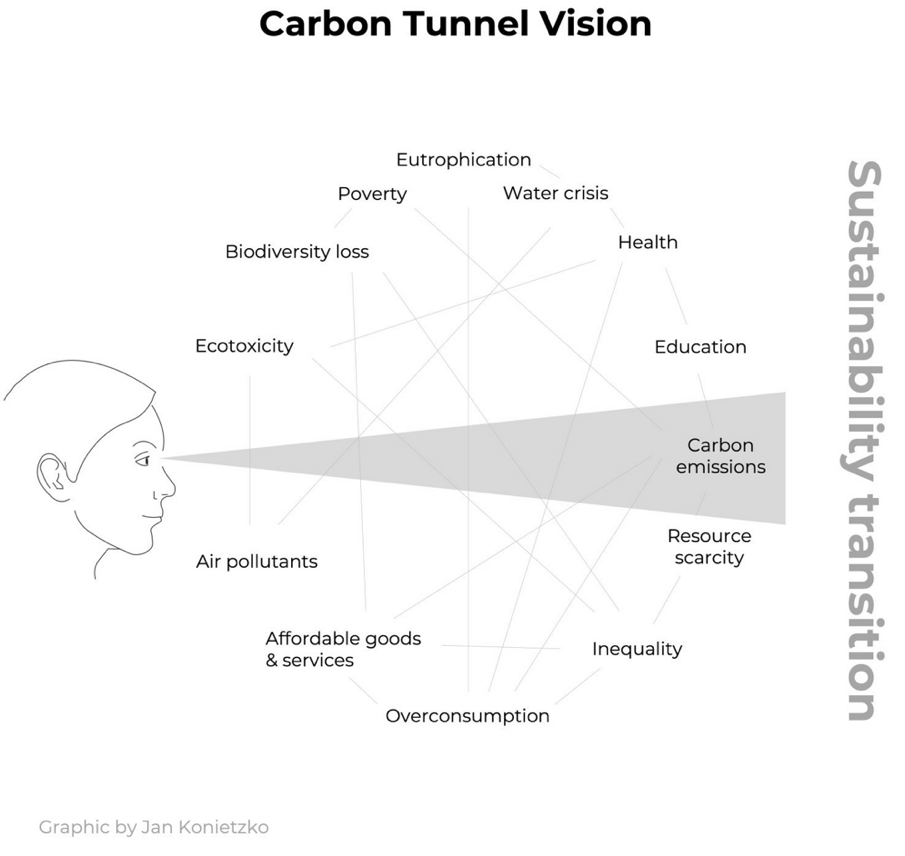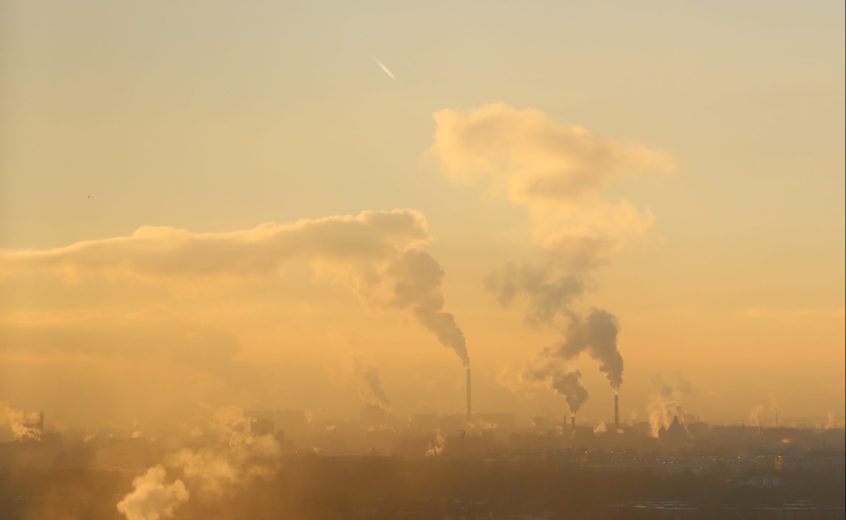Arguably the biggest and most complex challenge we’ve ever faced is staring us in the face. But what are we staring at?
Climate change isn’t on the horizon, it’s here. We see it in our humid summers, raging bushfires and unprecedented storms. It’s disrupting our supply chains*, displacing societies* and decreasing crop yields*. We’re heading into a climate catastrophe, but how did we get here?
It’s a question that we seem to be stuck on. But the fact that we’re stuck on it is even more bewildering. From the days of the industrial revolution and in the some 200 years since, it seems as though humanity has been wearing blinkers – blind to everything except the promise of money. Our societies wanted nothing more than bags of cash. Financial tunnel vision led us to this point of very likely climate collapse. But now, many of our solutions are prioritising CO2, which is absolutely needed, but not at the expense of everything else.
Could carbon tunnel vision create another set of social and environmental catastrophes?
The sustainability challenge is often incredibly oversimplified – zero carbon. While carbon neutral and net zero emissions strategies are undoubtedly imperative in slowing and reversing the effects of the climate crisis, we should also be aiming for a more inclusive, equitable and sustainable world. That kind of world needs more thoughtful approaches and solutions than just a reduction in carbon.

This concept, developed by Jan Konietzko, shows perfectly how if our blinkers simply switch from money bags to carbon emissions, we could lose sight of many of our human rights and environmental challenges. This is once more a way of saying, carbon reduction is not only the answer.
The United Nations Sustainable Development Goals (SDGs), the Stockholm Resilience Centre’s Planetary Boundaries and Donut Economics models also exist to show us the same thing. That we need multifaceted solutions to our climate crisis to stay within the bounds of a healthy, functioning society. This isn’t an 80/20 rule opportunity where 80% of our time is spent with carbon blinkers. But it is a reminder to look for complete solutions that cause no harm to any other environmental and human measure.
We do need sustainability to be approachable, and carbon is a great entry point to understanding a big piece of our sustainability challenges. It’s also the largest driver of climate change so is our most pressing goal to decarbonise. But we need to constantly be aware of its limitations and what this way of thinking neglects. Using carbon as a measure for sustainability is a lot like using GDP as a measure for happiness. It’s a certain contributor, however we’re missing a lot of information, and that’s not going to help us. Just like a focus on growth created the climate crisis, a focus on only carbon could generate other social and environmental problems.
Within the space of Climate Tech, we’re looking forward to supporting and amplifying the impact of companies that aren’t creating some good at the expense of biodiversity or human rights. With the SDGs and Planetary Boundaries at the forefront of our sustainability due diligence, we’re looking for solutions that are aware of every level of their actions, supply chains and potential. Only those solutions can truly #acceleratesustainability.

